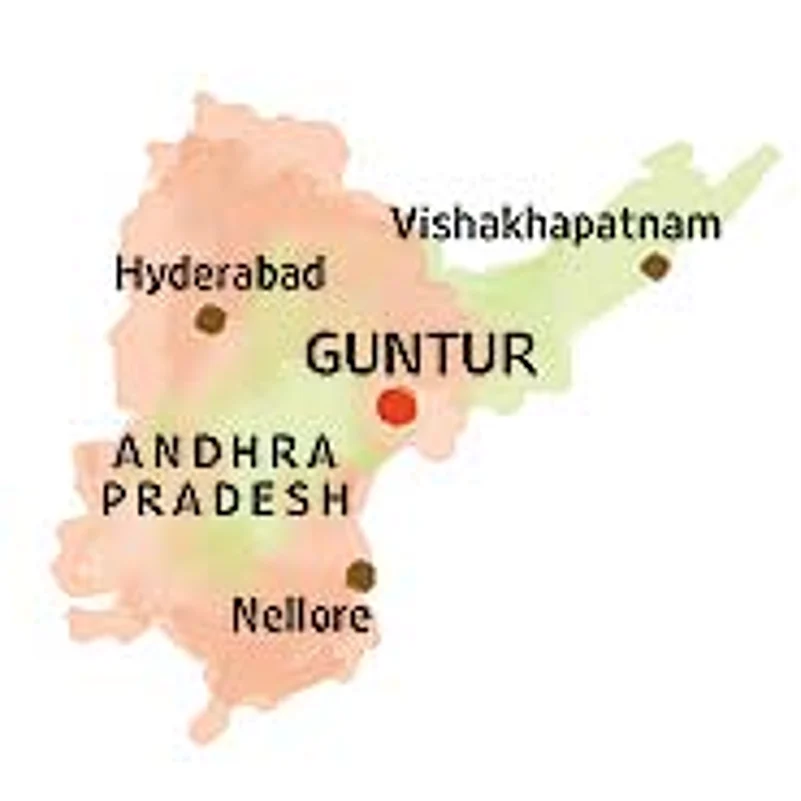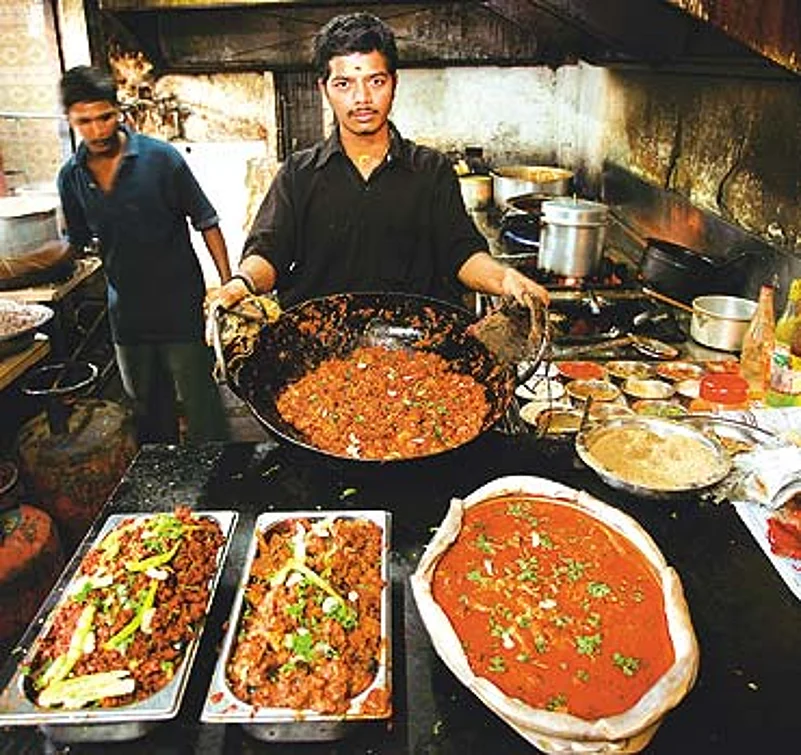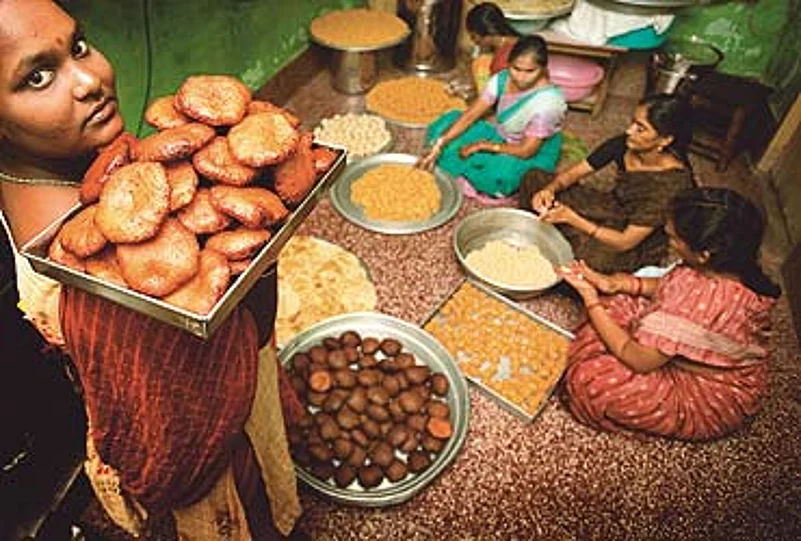

But chilli exports are only half of Guntur's story. The other half is the Gunturians' own inexhaustible appetite for the fiery spice, unknown on the subcontinent till the Portuguese brought it barely 500 years ago. Breakfast starts with chillies, straight after the morning's filter kapi, thin, green ones or long and red, ground into the pesarattu, the plump, fiery Andhra cousin of the original papery dosa, sprinkled for good measure with minced green chillies. Like nearly everything else, it too is eaten with freshly ground red ginger chutney, less ginger and more chilli. The more unfortunate line up before the city's many jalebi carts—yet another misnomer, serving less sweets than spicy treats, eaten by the roadside.
The speciality at these native fast joints is the egg dosa, brushed lovingly with a coating of egg, and served piping hot with a sprinkling of chilli powder, downed with a variety of chutneys, each spicier than the last. By 11 am, Guntur's industrious housewives are grinding the day's supply of vegetables—tomato, lauki, baingan—with what is easily a week's supply of chillies for an average Indian family, to tempt the family's flaming palate. Besides, there will be the usual array of spicy powders, those appetisers like kandipodi ('gunpowder'), so hot that even Gunturians have to lace it with generous dollops of pure ghee and hot rice. And no meal ends without a last lick of Guntur's famous line-up of pickles.
Guntur's gongura pickle, as pickle queen Edu Kondallu will tell you, is now travelling to every corner of the world, sealed in leak-proof polythene packets. There's an endless demand for it, fuelled at first by Guntur's own teeming population of nri doctors and engineers. Local legend has it that it was P.V. Narasimha Rao who first honoured Guntur's prized pickle. As foreign minister, he's credited with introducing this indescribably pungent paste tamely labelled 'Andhra methi chutney' at the non-aligned summit in Delhi in 1982. But others claim Indira Gandhi developed a taste for gongura pickle at an aicc session held here in 1964. But the G-pickle is just one of the dozens of pickles every Gunturian has been weaned on: mango, of course, and lime, but also amla, karela, tamarind, baingan, chicken, mutton, prawn and that grandmother of 'em all, the chilli pickle which even locals rather ominously call Tupakula Pachadi, Gun Pickle—huge plastic laundry bins of it, vanishing almost as fast as it's churned out.
Chillies drive the city's unique "curry points" as well. These local takeaways that make Guntur's tongue-scorcher specialities like fish pulasu (fish in tamarind sauce), prawn pakodas, country chicken pulasu and gongura mutton, to go with dum chicken biriyani, are a new feature of the ancient city, once renowned as a Buddhist centre. Guntur is flirting with tandoori fare as well, and pizza joints (pizzas come, of course, with generous helpings of chilli flakes), but it's a passing fancy, a keeping up with the city's new self-image as a happening place.

Not surprisingly, a tongue for chillies goes with a very sweet tooth. Time was when the only sweets at Guntur's many sweet shops were Ajmeri kalakand and Mysore pak. But with the city prospering enough to afford nostalgia, there's now a thriving industry in reviving traditional sweets as grandma made them: arselu and burrelu, rice pancakes with coconut and jaggery stuffing deep-fried in Guntur's fragrant ghee; sojje garelu, mildly sweet pancakes of jowar, rava laddoos and payasams.
Does the city ever tire of its passion for spice? It does, as we discovered one noon when our tongue and stomach both rebelled against Guntur's fiery fare. Judging by the long queue outside Guntur's oldest eatery, Anand Bhavan, we weren't the only ones wanting a break. There, on plain wooden benches like in a village primary school, Guntur washed its palate off with a very sattvic bhojan served on banana leaves, of mild rasam-sambar and rice. The Bhavan's young proprietor, an mba whose Tam-Brahm grandfather opened the eatery over a hundred years ago, gives us the secret of its success: "We don't use garlic or onions, and hardly any chillies."
This, though, is but a momentary lapse, as Srinivas Rao will tell you. This Gunturian has been wheeling his cart to Donka Road Crossing punctually at 7 every evening for the last 22 years, dishing out over 5,000 plump, green chillies a day dipped in besan and deep-fried in a kadai the size of a small lotus pond to his enthusiastic clientele. His business, Rao informs us in between skimming the chillies out of the blubbering oil, is booming as never before. No, Guntur can't do without its mirch masala.























